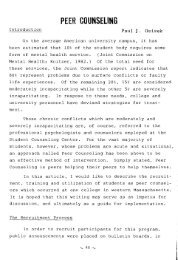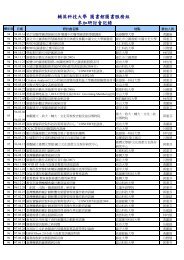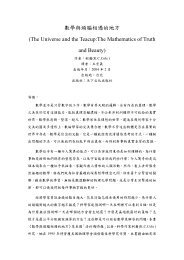The Effectiveness of Creative Teaching Strategies
The Effectiveness of Creative Teaching Strategies
The Effectiveness of Creative Teaching Strategies
You also want an ePaper? Increase the reach of your titles
YUMPU automatically turns print PDFs into web optimized ePapers that Google loves.
4teaching to promote the motivation <strong>of</strong> students to be creative.Based on the Guilford’s SI model, Chen during 1990s developed an ATDE(asking, thinking, doing, evaluation) model to cultivate the divergent thinking <strong>of</strong>students. For asking, ten methods <strong>of</strong> asking questions using “If”, “List”, “Besides”,“Compare”, “Similar”, “Replace”, “Imagine”, “Possible”, “Constitute”, “6W” caninspire students to think divergently. For thinking, teachers must allow students tothink at least three seconds for answers. For doing, teachers can choose a guider todirect group discussion consisting <strong>of</strong> 5-10 students through brainstorming. Forevaluation, teachers should encourage students to do self-evaluation by following twoprinciples, “critique slowly” and “accept more”.Regarding the definitions <strong>of</strong> creativity, Guilford has defined creative thinking asfluency, flexibility, originality, sensitivity, and elaboration (Guilford, 1956). In 1970,Williams addressed that creativity should include fluency, flexibility, originality, andelaboration. Demetrulias and Shaw (1985) later work supported inclusion fluency,flexibility, associative thinking, and originality in creativity. <strong>The</strong>n Dowd (1995)proposed that creativity should consist <strong>of</strong> fluency, flexibility, and originality. Finally,Chen (1998) and Chang’s (1999) definition <strong>of</strong> creativity was fluency, flexibility,originality, and elaboration.Overall, fluency, flexibility, and originality are the most frequently recognized as












